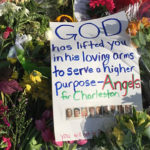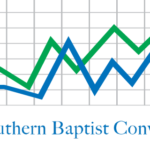WASHINGTON (RNS)—Hand sanitizer appears at the sanctuary entrance. Worshippers greet each other with a cautionary bow rather than a warm handshake or hug. Absences increase in Bible classes.
The H1N1 flu pandemic is shaking up religious communities and disrupting worship life. But when does caution veer into paranoia? And what is lost when faith becomes fear?
|
President Obama gets his flu shot (PHOTO/ www.flu.gov)
|
With H1N1 flu being declared a national emergency, religious or-ganizations are issuing guidelines for worship practices and even personal interaction during liturgy. In a reversal of the usual open invitation, some faith communities are asking people who don’t feel well to stay home.
“I have skipped church when the kids were sick,” said Ruth Wynja Gibbons of Whitinsville, Mass., whose 6-year-old son and 3-year-old daughter came down with bad colds. As it turned out, the kids didn’t contract H1N1, or swine flu, but Gibbons has noticed a drop in the number of children in Sunday school at Pleasant Street Christian Reformed Church.
At her church’s Sunday service, members are advised that they need not shake hands when the time comes to greet fellow worshippers.
“I personally just greet people verbally, not shake hands,” she said. “I think it’s a good precaution, that people not spread illnesses this time of year. It’s better to be safe than sorry.”
At Gibbons’ church, Com-munion wine traditionally is distributed in individual, disposable cups, but in some denominations, worshippers use a common cup. Advice varies. Some churches have banned the common cup since sipping from a shared cup may be a path to sickness.
Concern about passing along infections is causing changes in style among some clergy. Laurie Wozniak, a parishioner at Trinity Episcopal Church in Buffalo, N.Y., noted that her pastor, Cam Miller, normally is a hug-and-shake-hands kind of guy. When he wasn’t feeling up to par recently, he refrained even from meeting parishioners at the door, she said.
Sign up for our weekly edition and get all our headlines in your inbox on Thursdays

Hand sanitizer became the symbol of fears of a flu pandemic in 2009.
|
“He ventured no closer (to the congregation) than the pulpit. He explained … it was to make sure he was not communicating any germs. He stayed in the high altar area, so he could still be there and function,” she said.
Miller said he had upper respiratory symptoms, but didn’t have a definitive diagnosis. “My biggest concern was not being a distraction to other people,” he said.
An Italian inventor has come up with a dispenser that releases a few drops of holy water when worshippers pass their hands under it, to avoid the communal holy water basin used in some Christian liturgies. But all these precautions have some people wondering if an essential part of a faith community is getting lost.
Pamela Dempsey DeVries, who attends Fuquay-Varina Baptist Church in Fuquay-Varina, N.C., has kept her three children out of services, although they continue to attend Sunday school. As caretakers of the family, she said, women are bearing the brunt of the flu scare.
At worship, she keeps hand sanitizer in her purse and now is “more reserved” in greeting other parishioners, and worries she may seem less friendly to newcomers.
“It’s very Southern,” she said. “Everyone gets out of their pew, walks all over the church. It’s a chance to welcome new people or find your friends, and if you know people, give them a kiss or hug.”
Tim Schenck, rector of St. John the Evangelist Episcopal Church in Hingham, Mass., is taking all the usual precautions and found himself hurriedly writing a swine flu policy for his church after a parishioner’s child came down with H1N1. But he also mourns the emphasis on avoiding human touch.
“You don’t want to take this lightly or minimize it, but sacramental touch is being lost, and that can’t be replaced by being washed in Purell. Sacramental touch is an outward and visible sign of God’s presence. It’s human interaction and communication at its deepest level,” he said.
“It’s a shame that fear is being brought into the sanctuary, because you would hope that the sanctuary is a place where there is no fear.”















We seek to connect God’s story and God’s people around the world. To learn more about God’s story, click here.
Send comments and feedback to Eric Black, our editor. For comments to be published, please specify “letter to the editor.” Maximum length for publication is 300 words.